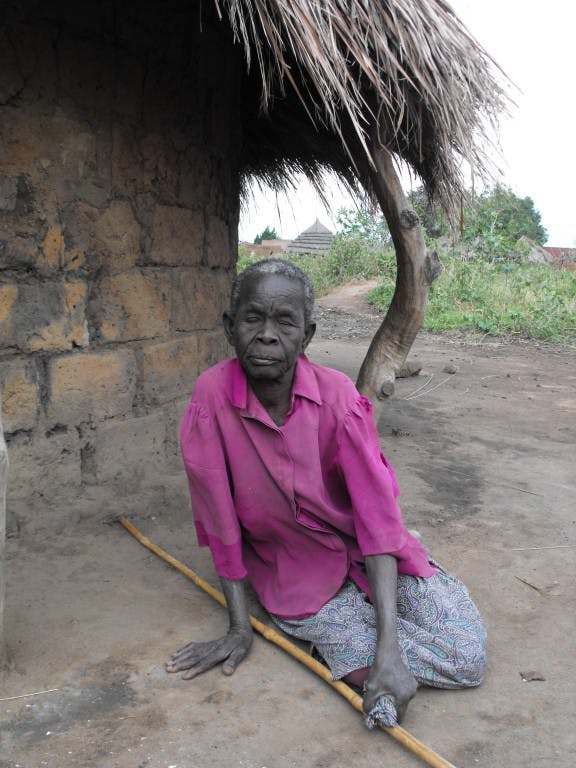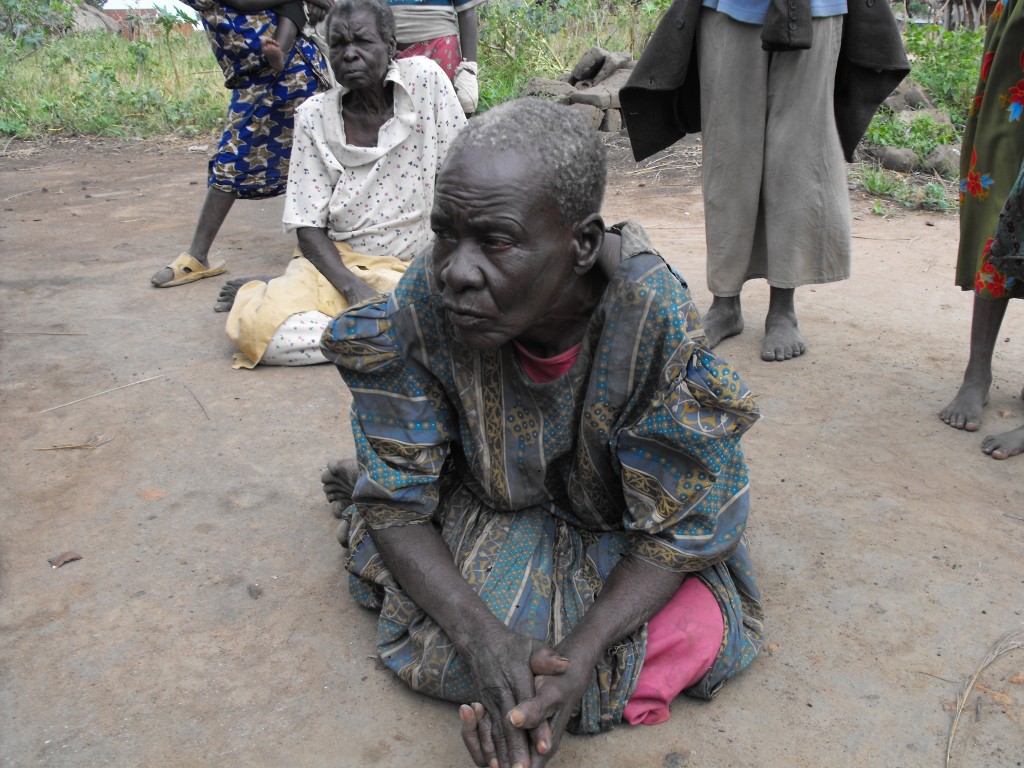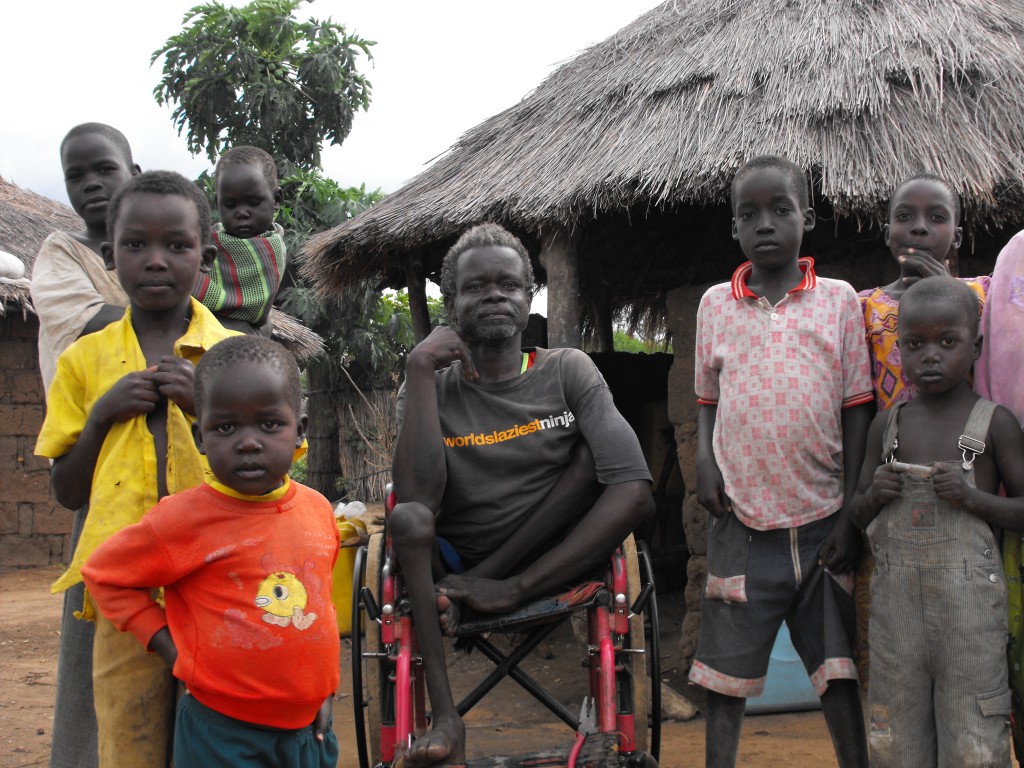Village of Lost Hope
Jan 21, 2015
Story







Hunger is something that maws at you day and night. It keeps you from going to sleep and it wakes you from sleep. For the young and youthful, it can motivate you to look for food from any source. What was once considered inedible becomes edible, like rats and cockroaches, which many in Northern Uganda have been driven to eat due to the famine in the region. What was once a snack like mangoes has become a meal. My family has known of such hunger, but although those days are long gone for us, they are very present and real for my neighbors in the North.
This is the situation now in many rural areas in Northern Uganda, in places like Akore, in the Acowa district, Kapelebyong county, Nyada and Amuiria village in the Teso region. But for the aging and handicap, they remain at the mercy of their younger compassionate neighbors. Look at Josephine Ara, 75 years old. Although she has firewood, she has no food to cook with, when initially asked her age she said, “I don’t really know my age. My problem is that I am hungry”.
Geoffrey Ongodia is in a wheelchair, and the adopted father of 8 orphans, how can he fend for himself.
Aslina Agwong is 75+, she is blind and near death, you have to literally shout in her ear to get here to hear you. “I get food from my neighbor, but if she fails to get food for the day, then so do I”.
Then there is Elizabeth Aim 79+ on the left. “I don’t have anything to eat, you can see yourself. No children. When the government brings food, I can’t walk to get it, so I can go hungry unless someone shares with me the little they have gotten. Easter along with the other two women were brought to discuss their plight with me, and their story was translated by the Local Chairman Mr. Julius Ocen of the district. The bigger problem is health. There are no drugs and what we eat is poor quality food. You need to food to put on your stomach to take the drugs, and not having enough food makes you sick, but there are no clinics nearby."
However, these elders are strong and resilient despite their conditions. Consider Nora Achoro, 78 on the left, “My son died of AIDS, left children but I was unable to care for them so others took them in. I make money by sewing calabash used for bathing and eating.”
Further inside the village, I found Christne Inyongai, 65+ who was sitting outside while burning a fire inside her hut to kill the flees. "I have jiggers in my feet and hands, they keep me from being able to walk.” Jiggers are maggots that go under the skin and feed off the blood of the living, like maggots feed off the dead. They are painful, cause paralysis and much suffering, but still Christine continues to be hopeful that help is on the way.
The last but not least of the suffering elders is Valina Aramo 80 + years old, she, too, is unable to walk and only crawl around her small hut, sleeping on a cloth for a bed. She was born with only one functional hand, the other is disfigured.
The Greater Danger
So, while drought, lack of income generating projects, war and conflict, lack of skill workers can account for the situation, the more pressing issues in the future are the predictions by metrologies that during this rainy season, many of these areas will receive more than their share of rainfall, causing much flooding on the dirt paved roads.
Such conditions could make it impossible for vehicles to reach already deprived areas with food or medical supplies. I have asked myself that although my family was poor and unable to afford food sometimes, what could make a whole group of people suffer and go hungry for a long period of time.
The Problem
According to Professor Mandani in the Sunday Monitor, the starvation does not stem from prolonged droughts, but failed policies. In his analysis of the situation, the most fertile land for growing crops has been given to game parks and wild animals instead of the people of Northern Uganda. However, Julius Ochen takes us closer to the problem in Amuria village, which has historical roots that have led up to the present famine crisis.
Talking to anyone in the Teso area about poverty, food shortages, and other problems, one will learn that the answer also goes back to the issues of cattle, which was the livelihood of their previous existence. In over a decade of conflict and war more than 200,000 cattle were stolen from the area, 112 women were raped and infected with HIV/AIDs by soldiers, and 600 children were kidnapped by the Lord’s Resistance Army (LRA) and never seen again.
Hence, the war and conflict with the LRA and the Karamonjong created 4,000 widows in the Amuria district alone. Families were broken and torn apart and never put back together, so now the elders are left to fend for themselves or die by themselves, unless more good Samaritans are located to help improve their conditions and provide them an opportunity to die with dignity or go sleep peacefully with a full belly.
Unfortunately, the people in this region have lost hope in the government’s ability to come to their aid, and when they do, “it is used as a political stunt, they call the people to come to an area with the media already there. The area they call the people to come and get the food, is too far away for those with transportation money to get to, and what they give is only enough to sustain you for a very short time.”
“Finally because of the many incidences of all nature that we have gone through yet with little support from development partners at all levels. We have continuously cried to the top of our voices but none has hear us, we will be heard when we are all dead,” shared Asubu David, also from the Soroti region.
The Solution
Solving the problems is not difficult but it will take some assistance from the government, local donors and international donors.
First, of all, due to the lack of cattle to help with agricultural cultivation of land, the people are in need of hand tools and tractors to plant crops.
Second, providing irrigation pipes to move water from swamp areas to dry drought prone areas.
Third, they need planting seeds and materials to plant sustainable crops that will thrive in harsh weather conditions.
Fourth, they need skills development training to improve the sustainable income generating activities for youth and working age adults.
And finally, they need the assistance of NGO’s and individuals to volunteer time, money and resources to help improve the plight of the elderly, disabled and orphans who are unable to care for themselves.
This article is part of a writing assignment for Voices of Our Future, which is providing rigorous web 2.0 and new media training for 31 emerging women leaders. We are speaking out for social change from some of the most forgotten corners of the world. Meet Us.




